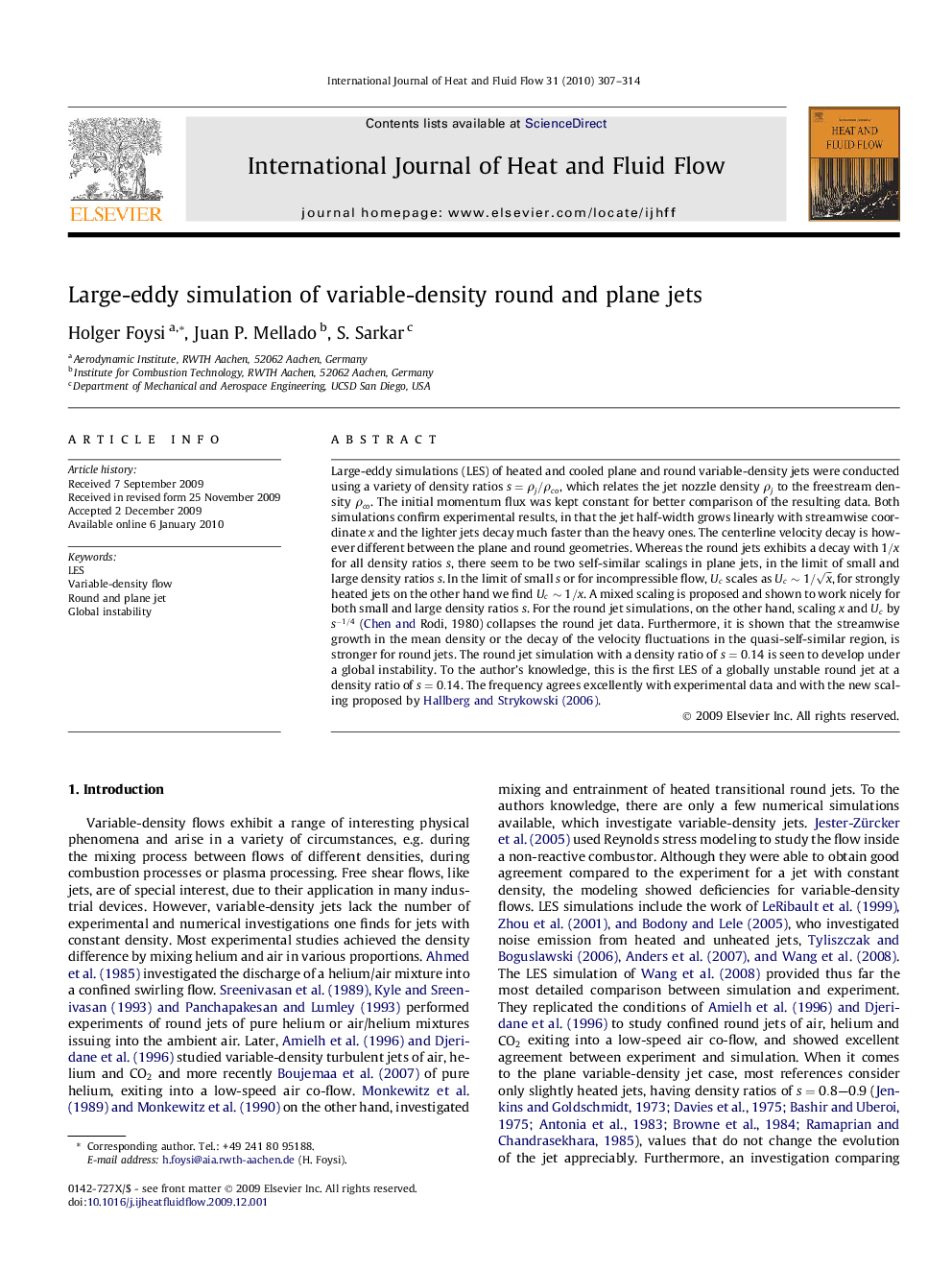| Article ID | Journal | Published Year | Pages | File Type |
|---|---|---|---|---|
| 655453 | International Journal of Heat and Fluid Flow | 2010 | 8 Pages |
Large-eddy simulations (LES) of heated and cooled plane and round variable-density jets were conducted using a variety of density ratios s=ρj/ρcos=ρj/ρco, which relates the jet nozzle density ρjρj to the freestream density ρcoρco. The initial momentum flux was kept constant for better comparison of the resulting data. Both simulations confirm experimental results, in that the jet half-width grows linearly with streamwise coordinate x and the lighter jets decay much faster than the heavy ones. The centerline velocity decay is however different between the plane and round geometries. Whereas the round jets exhibits a decay with 1/x1/x for all density ratios s, there seem to be two self-similar scalings in plane jets, in the limit of small and large density ratios s. In the limit of small s or for incompressible flow, UcUc scales as Uc∼1/x, for strongly heated jets on the other hand we find Uc∼1/xUc∼1/x. A mixed scaling is proposed and shown to work nicely for both small and large density ratios s. For the round jet simulations, on the other hand, scaling x and UcUc by s-1/4s-1/4 (Chen and Rodi, 1980) collapses the round jet data. Furthermore, it is shown that the streamwise growth in the mean density or the decay of the velocity fluctuations in the quasi-self-similar region, is stronger for round jets. The round jet simulation with a density ratio of s=0.14s=0.14 is seen to develop under a global instability. To the author’s knowledge, this is the first LES of a globally unstable round jet at a density ratio of s=0.14s=0.14. The frequency agrees excellently with experimental data and with the new scaling proposed by Hallberg and Strykowski (2006).
